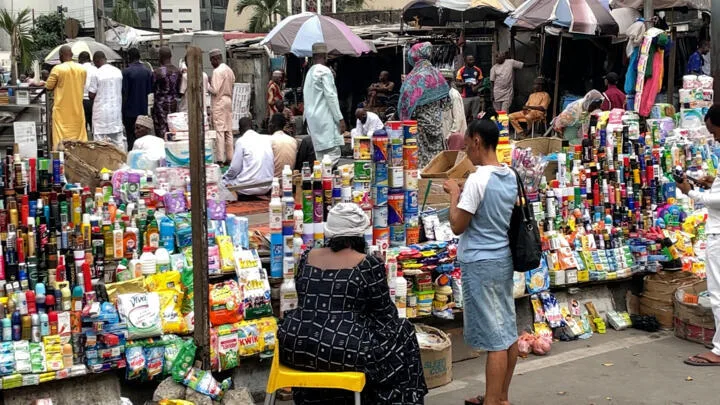Nigeria’s inflation rate eased to 22.22% in June 2025, down from 22.97% recorded in May, according to the latest Consumer Price Index (CPI) report released by the National Bureau of Statistics (NBS).
This marks a 0.75 percentage point year-on-year decline and an 11.97-point drop compared to the 34.19% inflation rate recorded in June 2024. The figures are based on the updated 2024 base year.
On a month-on-month basis, headline inflation rose slightly to 1.68% in June, up from 1.53% in May, indicating a modest acceleration in the average price increase within the month.
Food inflation for June 2025 stood at 21.97% year-on-year, significantly down from 40.87% recorded in June 2024—a drop of 18.93 percentage points. However, month-on-month food inflation increased to 3.25% in June from 2.19% in May, driven by rising prices of dried green peas, fresh pepper, dried white shrimps, crayfish, fresh meat, tomatoes, plantain flour, and ground pepper.
Core inflation, which excludes volatile agricultural produce and energy prices, was 22.76% year-on-year and 2.46% month-on-month, up from 1.10% in May. The 12-month average core inflation rate stood at 24.14%, slightly higher than 24.01% a year earlier.
Urban inflation rose to 22.72% year-on-year and 2.11% month-on-month, compared to 1.40% in May. In contrast, rural inflation was 20.85% year-on-year, with a slower monthly increase of 0.63%, down from 1.83% in the previous month. The 12-month average rural inflation rate was 24.65%, down from 28.15% in June 2024.
At the state level, Borno recorded the highest year-on-year headline inflation at 31.63%, followed by the Federal Capital Territory (26.79%) and Benue (25.91%). The slowest inflation rates were in Zamfara (9.90%), Yobe (13.51%), and Sokoto (15.78%).
For month-on-month changes, Ekiti led with a 5.39% rise, closely followed by Delta (5.15%) and Lagos (5.13%). Zamfara (-6.89%), Niger (-5.35%), and Plateau (-4.01%) saw the steepest monthly declines.
State-level food inflation data also revealed significant regional disparities. Year-on-year, the highest food inflation rates were in Borno (47.40%), Ebonyi (30.62%), and Bayelsa (28.64%), while Katsina (6.21%), Adamawa (10.90%), and Sokoto (15.25%) experienced the slowest increases.
Month-on-month food inflation was highest in Enugu (11.90%), Kwara (9.97%), and Rivers (9.88%), with declines recorded in Borno (-7.63%), Sokoto (-6.43%), and Bayelsa (-6.34%).
The NBS advised caution when comparing inflation rates across states, noting that differences in CPI weights reflecting varying consumption patterns may affect regional inflation measurements.


